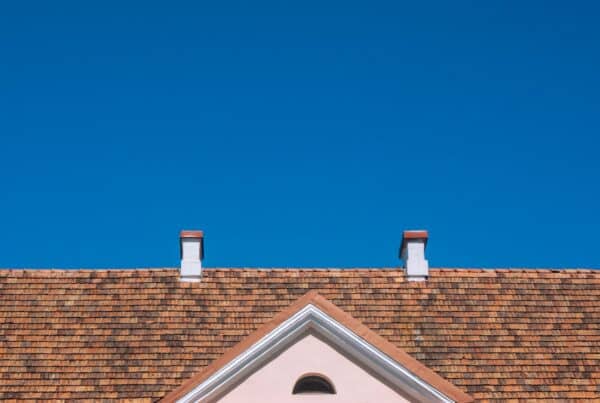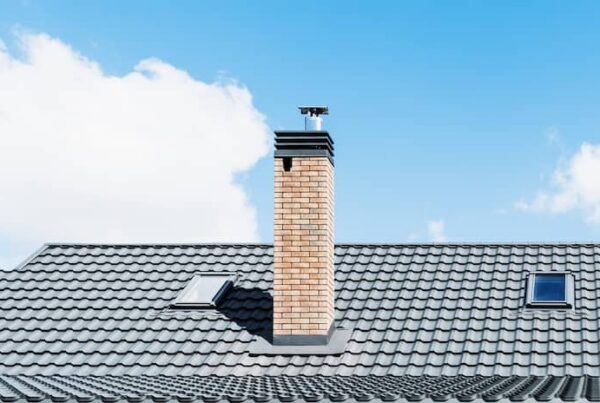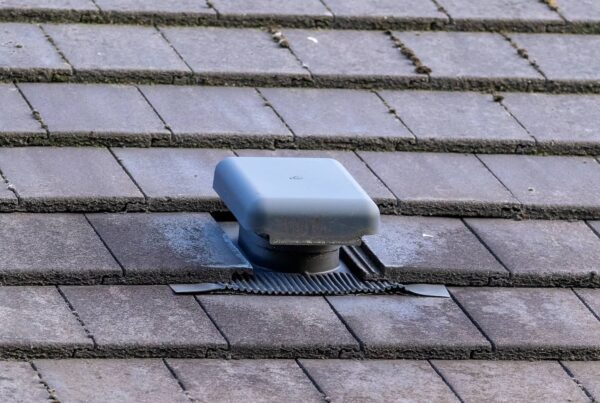
For every homeowner, the battle against the elements is a persistent and important aspect of preserving their space. Water, in particular, poses a unique challenge. Too much of it in the wrong place can lead to adverse effects on both the roof and the foundation of a house. An efficient gutter system plays a pivotal role in this ongoing defense, with a specific component critical to its success – the downspout.
If you’ve never taken an in-depth look at the various parts of your roof and gutters, you may not be familiar with this important piece. In the sections below, we’ll explore why managing water runoff is essential, and how to get it right.
The Basics of a Downspout
At their core, downspouts are precisely engineered pipes that work in concert with the gutters attached to your roof. Their job? To take the water collected by the gutters and funnel it away from your home with purpose and precision. Downspouts typically run vertically, bridging the gap between the roofline and the ground, and are strategically situated at the corners of a house or building.
As rainwater or melting snow flows into the gutters, it’s the downspout’s role to ensure this water doesn’t simply spill over the gutter’s edge. Instead, downspouts provide a controlled pathway for this water to reach the ground. At the bottom, the water often goes into a drain or safely away from the house. This helps to keep the foundation dry and intact.

Why Downspouts Are Essential
Without downspouts, your home would be at the mercy of uncontrolled water flow, leading to a cascade of problems. These little heroes serve multiple purposes:
1) Foundation Protection: When water flows through the gutters, downspouts guard against pooling, and potentially seeping into, the foundation of your home.
2) Basement Safety: A dry foundation means a dry basement. Downspouts help avoid the nightmare of a flooded basement and the ensuing costly repairs.
3) Soil Stability: Erosion can eat away at your landscaping and destabilize the ground. Downspouts play a role in distributing water evenly and safely, preserving soil structure.
4) Landscaping Preservation: Your garden and green spaces can suffer from excess water. By managing runoff, downspouts keep landscapes lush and intact.
5) Exterior Longevity: Finally, consistent water exposure can degrade your home’s siding, paint, and even structural materials. Downspouts help to minimize this risk by reducing moisture levels around these areas.
Types of Downspouts Available
When it comes to downspouts, one size does not fit all. There are various types available, each designed to complement different architectural styles and to handle varying volumes of water. Selecting the right type of downspout is crucial for ensuring that your gutter system is as efficient as possible.
Round Downspouts
Firstly, round downspouts are a popular choice for their smooth, classic appearance that blends well with traditional homes. They are typically used in conjunction with half-round gutters and can be an excellent choice for those seeking a blend of functionality and aesthetic appeal. Their cylindrical shape is adept at facilitating the flow of water, reducing the likelihood of blockages.
Rectangular Downspouts
Rectangular downspouts are common in modern and new construction homes due to their sleek, angular profile. They pair well with K-style gutters and offer a high degree of efficiency in water transportation. Their shape allows for a larger opening that can handle a substantial amount of water, making them suitable for areas with heavy rainfall.
Corrugated Downspouts
Corrugated downspouts feature a ridged design that provides extra strength and durability. This type is popular in regions with severe weather conditions as they can withstand more stress from wind and water. The corrugated texture also adds a unique visual element to the home’s exterior.
Chain Downspouts
Chain downspouts, also known as rain chains, offer a decorative alternative to traditional downspouts. They guide rainwater down chains or cups from the roof to the ground in a visually pleasing manner. While they may not be as efficient in heavy downpour conditions, they provide an aesthetic touch and are a conversation piece for homes with a keen sense of design.
Material Matters
In addition to varying styles, downspouts are also distinguished by their construction material. Here are the most common options:
- Aluminum: Lightweight, rust-resistant, and available in a variety of colors.
- Vinyl: Cost-effective and easy to install, but may not be as durable in extreme temperatures.
- Copper: Offers a distinctive look that develops a patina over time and is extremely durable.
- Steel: Strong and resistant to damage, ideal for homes in areas with severe weather.

Other Recommended Maintenance
Effective downspout maintenance is crucial for your home’s protection against water damage! Aim to inspect and clean your downspouts each spring and fall to avoid clogs. Use a snake to clear debris, especially at the turns where jams are most likely.
Ensure proper water flow away from your foundation by adding an extension to your downspout if necessary. Regularly look out for any signs of damage, such as rust or holes in metal downspouts, and patch small areas with waterproof sealant. For vinyl downspouts, be vigilant about cracks or signs of aging and replace sections as needed.
Installing gutter guards can help keep leaves and debris out, reducing the frequency of clogs. Make sure your gutters aren’t loose, and check that the soil around your home encourages water to flow away from the structure. All in all, staying on top of these simple tasks will keep your downspouts functioning efficiently and help prevent costly damage in the future.
When to Call a Professional
While routine downspout maintenance can often be DIY, there are instances when calling a professional is the best course of action. Keep an eye out for any of these concerning scenarios:
- Complex Blockages: If a clog is stubborn and cannot be cleared with standard home tools, a professional has the equipment and expertise to safely remove it without damaging your downspouts.
- Significant Damage: Should you discover extensive rust, large holes, or severe cracks, a professional can assess whether repair or full replacement is necessary. They will ensure that new installations are correctly integrated with your existing gutter system.
- Water Damage Indications: If you notice soil erosion, watermarks on your siding, or pooling water that persists despite your efforts, a professional can pinpoint the underlying issue that may not be immediately apparent.
- Structural Considerations: Equally important, a professional can evaluate whether your downspout system is appropriately sized for your home and the local rainfall patterns, offering solutions if your current setup is inadequate.
Final Thoughts
In summary, downspouts are an essential component of your home’s rainwater management system. They guide water away from your home’s foundation, preventing various potential damages.
Whether you prefer the sleek lines of rectangular downspouts, the traditional curve of round ones, the strength of corrugated designs, or the aesthetic appeal of rain chains, choosing the right type for your home is about balancing form and function.
Regular upkeep is simple but vital, keeping these crucial fixtures in working order to avoid water-related issues. If you come across any issues with your downspouts or would like to schedule a comprehensive home inspection, reach out to the experts at Boggs Inspection Services in Olympia, WA, and surrounding areas today.



